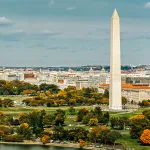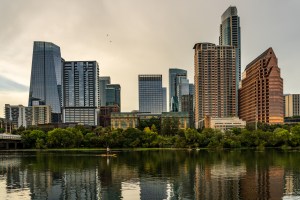Read the latest Yardi Matrix Office Market Outlook.
Office lease renewals nationally fell in April to their lowest level since the start of the pandemic, a potentially worrying sight for the sector, as workers remain slow to return to offices.
Office tenants renewed 43.8% of expiring leases by square foot in April, down 11.1 percentage points from 54.9% in January 2019, according to CommercialEdge. Since 2019, office renewal rates nationally have ranged between 50% and 60%, averaging 54.8%.

Only six of Yardi’s top 25 markets saw a positive change in expiring lease renewals from April 2021 to April 2022, although individual metro renewals are much more variable than the national average. Most markets saw decreases in renewal rates compared to a year ago, with the most significant declines in the Twin Cities (only 9.5% of leases renewed), the Bay Area (14.4%) and Boston (20.1%), per CommercialEdge.
April’s weak renewal data is concerning, as the return to office that some employers expected has been more sluggish than anticipated. Office security firm Kastle Systems reports that office occupancy levels have stalled at 43% for two straight months, suggesting a plateau that could be the “new normal.”
To be sure, April represents only one month of data, and the numbers at the metro level in some cases involve a small sample size, so the data is more of a warning sign than a red flag. That said, there are signals that should concern office owners. More companies are embracing hybrid or remote work models, while employees at some firms are balking at returning to the office. Meanwhile, the country is facing another surge in COVID-19 infections that will create more delays in any return to normalcy.
In such an environment, companies are increasingly reducing their space or looking to more flexible leasing models. According to CommercialEdge, the national office vacancy rate has increased 260 basis points since the beginning of the pandemic, to 15.8% in April.
The increase in vacancy rates has been concentrated in larger gateway markets, although secondary tech markets have also been challenged. Among gateway markets, the biggest jump in vacancy rates from pre-pandemic levels has been in San Francisco (10.6 percentage points), Manhattan (6.4) and Chicago (6.0). Tech hub markets with the most change in vacancy rates since March 2020 include Seattle (7.0), Denver (5.6) and Atlanta (5.0).
One factor tempering the increase in vacancy rates is the gradual proportion of office lease expirations, which will remain steady for the next several years, reducing the risk of mass amounts of office space becoming vacant at the same time. Between 11% and 13% of office leases will expire annually over the next three years, according to CommercialEdge. This steady level of expirations provides a timeline for owners to plan for the future of the space.
The amount of space expiring in the next few years together with the increase in vacancy rates is a concern for the industry that must be closely monitored. The proliferation of hybrid work could mean many offices will be reconfigured to meet the new work experience, and it will likely generate an increase in the amount of office space converted for life science, multifamily and industrial use.










Add Comment